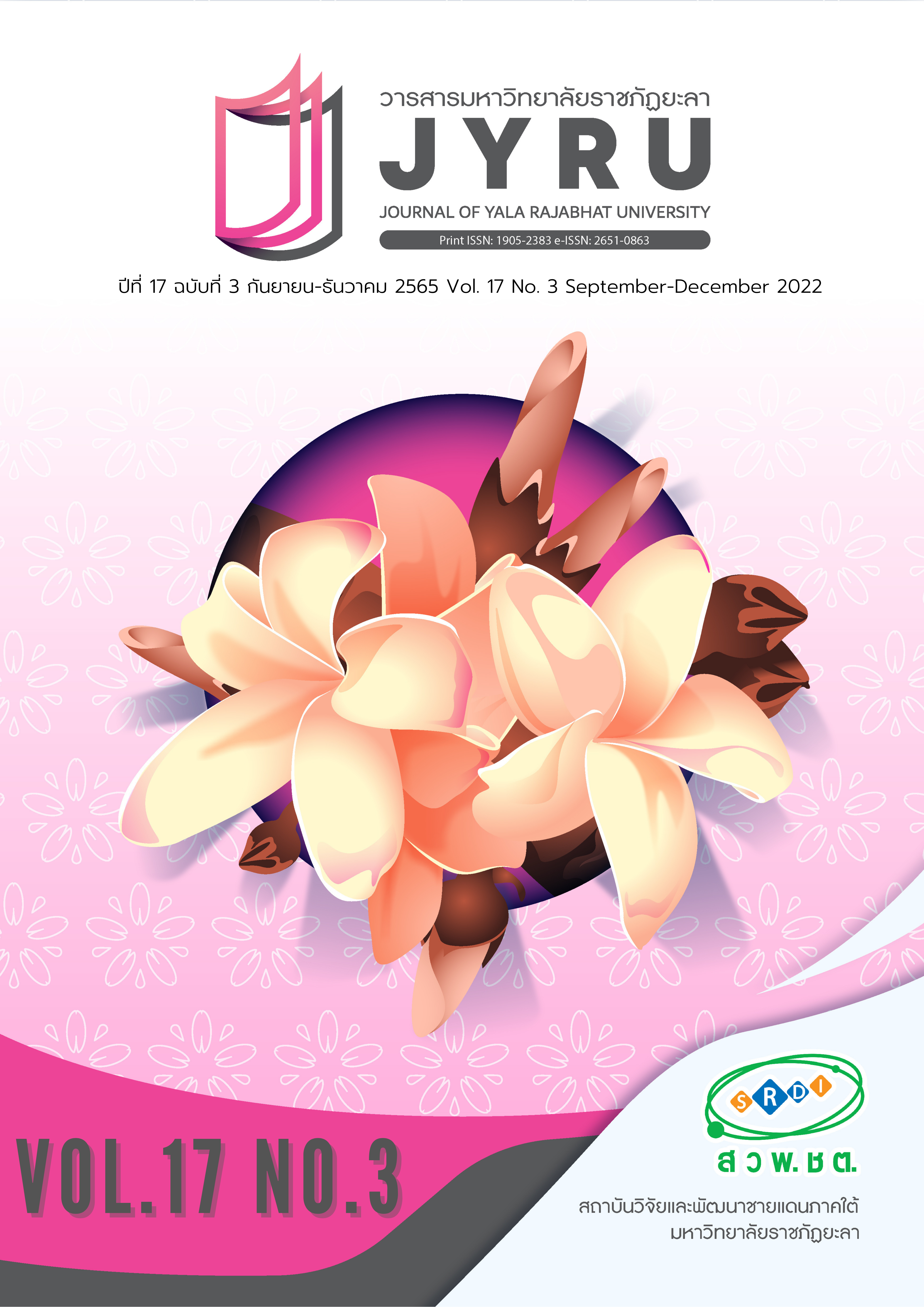อิทธิพลของแรงจูงใจทางวัฒนธรรมที่มีต่อความภักดีเชิงพฤติกรรม : การคั่นกลางอย่างมีเงื่อนไขของความเป็นของแท้ดั้งเดิมตามมุมมองของนักท่องเที่ยวผู้สูงอายุในภาคเหนือตอนบนของประเทศไทย
Main Article Content
บทคัดย่อ
กลุ่มจังหวัดภาคเหนือตอนบนให้ความสำคัญกับการพัฒนาแหล่งท่องเที่ยวเชิงวัฒนธรรมเนื่องจากปัญหาแหล่งท่องเที่ยวเชิงวัฒนธรรมขาดการเอาใจใส่และดูแลทำให้จำนวนนักท่องเที่ยวลดลง จึงทำการวิจัยโดยมีวัตถุประสงค์ (1) ศึกษาอิทธิพลของแรงจูงใจทางวัฒนธรรมที่มีต่อความภักดีเชิงพฤติกรรมของการท่องเที่ยวเชิงวัฒนธรรม (2) ศึกษาอิทธิพลของประสบการณ์ท่องเที่ยวและความพึงพอใจในแหล่งท่องเที่ยวเชิงวัฒนธรรมที่เปลี่ยนแปลงความสัมพันธ์ระหว่างแรงจูงใจทางวัฒนธรรมและความภักดีเชิงพฤติกรรมผ่านความเป็นของแท้ดั้งเดิม และ (3) ศึกษาการเชื่อมโยงความเป็นของแท้ดั้งเดิมที่มีต่อแรงจูงใจทางวัฒนธรรมและความภักดีเชิงพฤติกรรมของนักท่องเที่ยวผู้สูงอายุ กลุ่มตัวอย่าง จำนวน 384 คน ในพื้นที่ 8 จังหวัดภาคเหนือตอนบน ใช้แบบสอบถามเก็บข้อมูล โดยสถิติพรรณนาหาค่าร้อยละ ค่าส่วนเบี่ยงเบนมาตรฐาน สถิติอนุมานวิเคราะห์ด้วยสมการโครงสร้าง อิทธิพลตัวแปรกำกับด้วยโปรแกรมสำเร็จรูปทางสถิติ ผลวิจัยพบว่า แรงจูงใจทางวัฒนธรรมมีอิทธิพลทางบวกต่อความภักดีเชิงพฤติกรรมอย่างมีนัยสำคัญทางสถิติ 0.01 ความพึงพอใจเปลี่ยนแปลงความสัมพันธ์ระหว่างแรงจูงใจทางวัฒนธรรมและความภักดีเชิงพฤติกรรมโดยอ้อมผ่านความเป็นของแท้ดั้งเดิมอย่างมีนัยสำคัญทางสถิติ 0.05 ความเป็นของแท้ดั้งเดิมเชื่อมโยงแรงจูงใจทางวัฒนธรรมไปสู่ความภักดีเชิงพฤติกรรม เมื่อประสบการณ์ท่องเที่ยวมีค่าต่ำและความพึงพอใจนักท่องเที่ยวมีค่าสูง เพราะนักท่องเที่ยวผู้สูงอายุหากมีประสบการณ์น้อยหรือมาเที่ยวเป็นครั้งคราว ถ้าความพึงพอใจอยู่ในระดับสูง ไม่ว่าจะเป็นมิตรไมตรี ความปลอดภัย อาหารอร่อยและความดั้งเดิมที่เป็นอัตลักษณ์พื้นที่ท่องเที่ยว ข้อค้นพบสามารถนำไปเป็นข้อมูลให้ภาครัฐและเอกชนทำการส่งเสริมบริบทการท่องเที่ยวเชิงวัฒนธรรมให้มีชื่อเสียงเพื่อจูงใจนักท่องเที่ยวกลุ่มอนุรักษ์หรือนิยมความเป็นของแท้ดั้งเดิม
Article Details

อนุญาตภายใต้เงื่อนไข Creative Commons Attribution-NonCommercial-NoDerivatives 4.0 International License.
บทความ ข้อมูล เนื้อหา รูปภาพ ฯลฯ ที่ได้รับการเผยแพร่ในวารสารมหาวิทยาลัยราชภัฏยะลานี้ ถือเป็นลิขสิทธิ์ของวารสารมหาวิทยาลัยราชภัฏยะลา หากบุคคลหรือหน่วยงานใดต้องการนำทั้งหมดหรือส่วนหนึ่งส่วนใดไปเผยแพร่ต่อหรือกระทำการใดๆ จะต้องได้รับอนุญาตเป็นลายลักษณ์อักษรจากวารสารมหาวิทยาลัยราชภัฏยะลาก่อนเท่านั้น
เอกสารอ้างอิง
Aneksuk, B. (2016). Home Visits: Concept and Theory of Tourism Cultural. (2nd Ed.). Phitsanulok: Naresuan University Press. (in Thai).
Baruch, Y. (1999). Response rates in academic studies-a comparative analysis. Human Relations, 421-434.
Cronin, J. R., J. J., & Taylor, S. A. (1992). Measuring Service Quality: A Reexamination and Extension. Journal of Marketing, 56(3), 55-68.
Department of Tourism. (2016). National Tourism Plan (2017-2022). Bangkok: VIP Copy Print. (in Thai).
Department of Tourism. (2019). Cultural tourism sites [Online]. Retrieved October 29, 2019, from: dot.go.th/home. (in Thai).
Domínguez, Q. A. M., González-Rodríguez, M. R., & Paddison, B. (2020). The mediating role of experience quality on authenticity and satisfaction in the context of cultural-heritage tourism. Current Issues in Tourism, 23, 248-260.
Hair, J. F., Black, W. C., Babin, B. J., & Anderson, R. E. (2010). Multivariate data analysis (7th ed.). Englewood Cliffs : Prentice Hall.
Henseler, J., Ringle, C. M., & Sinkovics, R. R. (2009). The use of partial least squares path modeling in international marketing [Online]. Retrieved October 29, 2019, from : http://www.php. portals.mbs.ac.uk/Portals/49/docs/rsinkovics/pubs/2009-AIM-enseler-Ringle-SinkovicsPLS. pdf.
Lotae, P., & Piriyakul, M. (2019). The influence of tourist satisfaction, perceived value, familiarity and the image of loyalty towards tourism in the destination area of Thailand: A comparative study of the multigroup structure equation model among ethnic tourists. Dusit Thani College Journal, 13(3), 198-214. (in Thai).
Likert, R. N. (1970). A technique for the measurement of attitude. Attitude Measurement. Chicago: Ronal McNally & Company.
Meeprom, S. & Charoenrat, T. (2019). Examining the effect of tourists’ motivation and satisfaction towards Nakhonchaiburin tourism cluster. Development Economic Review, 13(1), 42-62. (in Thai).
Mendes, J. C., Valle, P. O., Guerreiro, M. M. & Silva, J. A. (2010). The tourist experience: Exploring the relationship between tourist satisfaction and destination loyalty. Tourism, 58(2), 111-126.
National Tourism Policy Board. (2016). Tourism development plan (2nd Ed.) (2017-2021). Bangkok: Printing Affairs Office of the War Veterans Organization of Thailand. (in Thai).
Northern Development Strategy Group (2019). Strategic management of the upper northern provinces 1 [Online]. Retrieved October 25, 2019, from: http//www.osmnorthn1.moi.go.th/new/project.php?year=2562. (in Thai).
Ramkissoon, H. & Uysalb, M. S. (2011). The effects of perceived authenticity, information search behaviour, motivation and destination imagery on cultural behavioural intentions of tourists. Current Issues in Tourism, 14(6), 537-562.
Romao, J., Neuts, & Nijkamp, P. (2015). Culture, product differentiation and market segmentation: a structural analysis of the motivation and satisfaction of tourists in Amsterdam. Tourism Economics, 21(3), 455-474.
Rovinelli, R. J., & Hambleton, R. K. (1997). On the use content specialists in the assessment of criterin reference test item validity. Dutch Journal of Educational Research, 2, 49-60.
Salim, I. S. (2016). The link between tourists’ motivation, perceived value and consumer loyalty: The case of film festival branding in zanzibar. International Journal of Business and Management Invention, 5(10), 18-28.
Tiberghien, G. (2014). Authenticity and tourism in Kazakhstan: neo-nomadic culture in the post-Soviet era. European Journal of Tourism Research, 12, 202-206.
Yolal, M., & Negruşa, A. L. (2012). Analysis of cultural tourism motivation: The case of Turkish. Chinese Business Review, 11(3), 283-291.


